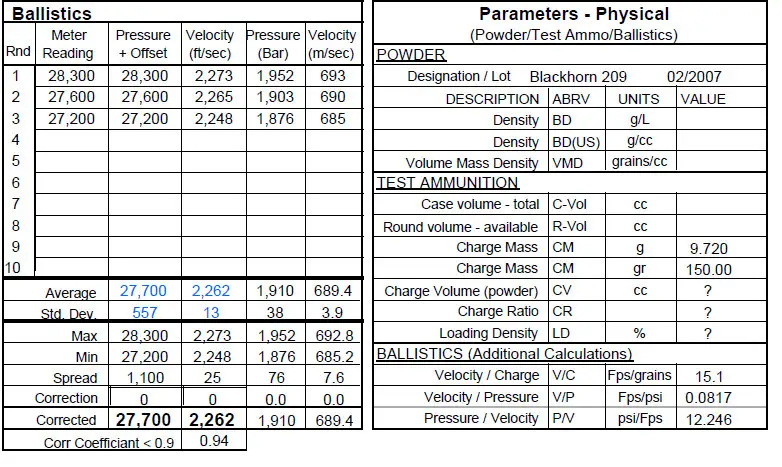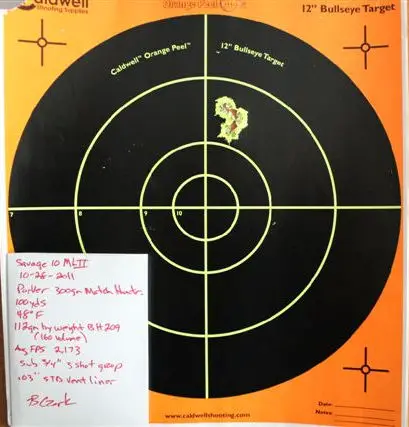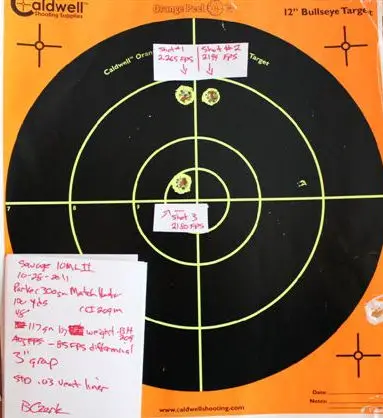


Technical Notes on Muzzleloading Propellants, Part One
There is a lot of confusion about muzzleloading propellants, as if loading from the muzzle dramatically changes what a propellant is or how it behaves: it doesn't.
Blackpowder is a fairly recent term, as historically, for centuries, it was just “gunpowder” or powder. Black powder is not a chemical compound, but a mixture.
The first “blackpowder substitutes” were what we like to call “smokeless powder.” Pyrodex, Triple Se7en, Blackhorn 209, etc., are all smokeless powders as classified by the DOT. Only Pyrodex is close to a blackpowder performance substitute, but even Pyrodex is more energetic.
Triple Se7en (essentially model rocket fuel) and Blackhorn 209 are both more energetic, producing more gas and more pressure compared to organic blackpowder and Pyrodex. More gas and more pressure is a very good thing, for that is naturally where muzzle velocity comes from.
Both
Triple Se7en and Blackhorn 209 are VERY bulky, low efficiency propellants
compared to what we like to call smokeless powder. That makes them both
relatively low output, high recoil, and high residue.
In Discriminating Hodgdon Pyrodex(®) and Triple Seven(®) using
gas chromatography-mass spectrometry,© 2010 American Academy
of Forensic Sciences, you'll find that “Pyrodex(®)
and Triple Seven(®) are black powder substitutes that often find use
as fillers in improvised explosive devices, such as pipe bombs. These
propellants have essentially the same overall appearance and oxidizers,
but different fuels. For example, Pyrodex(®) contains sulfur, sodium
benzoate, and dicyandiamide (DCDA), whereas Triple Seven(®) lacks
sulfur but also contains 3-nitrobenzoic acid.”
The extremely high bulk of Triple Se7en and Blackhorn 209 is what allows them to be marketed as “blackpowder substitutes for modern inline rifles,” as they can be measured by blackpowder volumetric powder measures, even though neither are blackpowder chemically, on the basis of ignition, or on the basis of gas generation and resultant performance.
Pellets naturally are no powder at all, that much is self-explanatory. The black igniter pad of a Pyrodex pellet is organic blackpowder. Larger sizes of Estes model rocket motors use ammonium perchlorate composite propellant, or other composite fuels that contain ammonium nitrate.

Blackhorn 209 manufacturer's published load recomendations stop at 120 grains by volume for modern inlines and 250 - 300 grain projectiles. However, 150 grains by volume (108.1 grains actual weight as tested) yields an average velocity of 2262 fps with a 300 grain Barnes MZ-Expander. Yes, 150 grains of Blackhorn gives you better velocities than 200 grains of Pyrodex pellets.

Above, an extremely heavy, high-recoil Blackhorn load (not a recommended load!) at 100 yards, and below, the same load targeted at 300 yards.

For example, 44 grains by weight of Accurate 5744, a double-based propellant, yields 2000 fps pushing a 300 grain saboted bullet out of a Savage 10ML-II. 60 grains by weight of N120 (a single-based propellant) nets 2300 fps or so, with a 300 grain saboted bullet out of a Savage 10ML-II. You can indeed get that with Blackhorn 209. It takes a whopping 108.1 grains by weight to do it (2262 fps avg.), though, as shown in the graphic above. All that extra propellant mass means more recoil, as free recoil is partly derived from the propellant weight, sabot weight, and bullet weight as part of the equation. There is a little shortcut you can use to approximate velocity with Blackhorn 209: with a .50 caliber barrel, using a 300 grain sabot, one grain by weight of Blackhorn 209 is about 15 feet per second muzzle velocity. If you refer to the standard published loads from Western Powders, below, you'll see this is a very good approximation. There is a 28 grain weight difference between 80 grains volumetric and 120 grain volumetric loads. 28 x 15 fps= 420 fps.
If you want to convert volumetric grains of Blackhorn 209 to grains by weight, multiply by 0.70. Going the other way, from grains by actual weight to volumetric blackpowder measure grains, multiply by 1.4285714285714285714285714285714.

Very
little is truly absolute in muzzleloading, for lab conditions are not
our shooting conditions, and there are variations from rifle to rifle.
Nor are all saboted bullets equal, even if they have same published grain
weight. The published average velocities above show 2039 fps for a 300
grain Hornady SST Low Drag Sabot, yet 2092 fps for a 300 grain Barnes
MZ-Expander.
Copyright 2014 by Randy Wakeman. All Rights Reserved.

Custom Search


